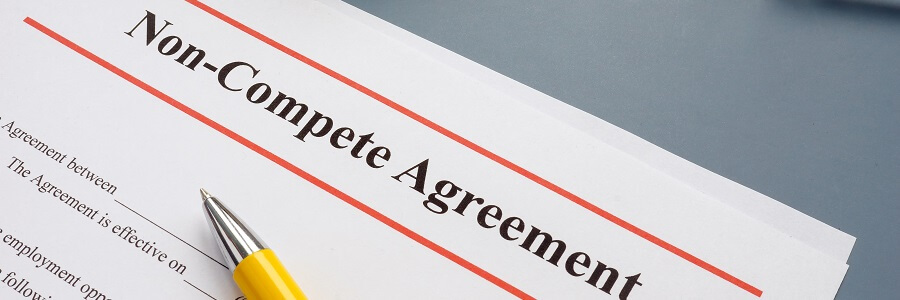Employee Benefits

Already using ExtensisHR? See manager login here and employee login here.
Employee benefits are a type of non-wage compensation provided by employers to employees. Businesses offer benefits on top of wages or salaries, as part of their total reward system.
While there is a broad spectrum of benefits available today, employers should consider tailoring their packages to cater to their workforce or personal needs of the recipient. Employees who use benefits can cut their personal costs and potentially achieve tax efficiencies, making them highly desirable.
The value of employee benefits
Employee benefits can improve the personal and professional life of your workforce. It’s not surprising that benefits are proven to enhance candidate attraction and retention.
According to research, 92% of employees state that benefits are related to job satisfaction. This means that benefits can be a key factor for employees when considering whether to stay with your business or leave. Specifically, one-third of professionals mention that poor benefits can be a driver to seek other opportunities externally.
Apart from retention, which is an important HR metric, benefits can also be key for recruitment. Research has shown that 63% of candidates consider benefits when evaluating a potential employer. This means that a strong benefits plan can help you attract the top talent you need. As such, benefits should be a central component of any sophisticated reward management system, and help businesses become an employer of choice.
The difference between benefits and perks
People often confuse benefits with perks. While both are non-wage compensation elements, they are very different. Benefits are more inclusive, as they are typically offered to all employees. Healthcare, dental, and vision plans are a common benefit example. Perks can be reserved for a group of employees based on performance, seniority, or role. Performance-related bonuses are a common perk example.
Statutory and voluntary benefits
Traditionally, benefits mainly focused on healthcare and retirement. However, this scope has now broadened to include benefits covering an employees work/life, health, and finances. While all benefits can be helpful to employees and in turn to businesses, most of them are voluntary, meaning that offering them is at the employer’s discretion. However, there are some statutory benefits too, which all employers need to make sure that they offer to their workforce.
Statutory Benefits
Employment legislation can be complex due to the volume of state, local, and federal laws. With this in mind, we provide you with a list of key statutory benefits. Employers must ensure they meet the below requirements to remain compliant.
- COBRA: stands for Consolidated Omnibus Budget Reconciliation Act. Essentially, it is legislation that requires all employers to provide leavers with health insurance for a period after their exit.
- Workers’ Compensation: protects employees who get injured on the job. While each state has its own regulations, it’s a required benefit for many businesses.
- FMLA: stands for Family and Medical Leave Act. Allows employees to take time off for family care. This may include the birth or adoption of a baby or caring for a close relative.
- Unemployment benefits: While each state has its own rules, all businesses across the United States must provide unemployment benefits to their employees.
Benefits classification
Sophisticated benefits span various employee needs from their work life to their personal affairs, including health and finances. However, all benefits can be broadly classified into the below categories.
- Work benefits: improving the working conditions of an employee
- Health benefits: managing an employee’s health and wellbeing.
- Financial benefits: securing an employee’s finances
- Lifestyle benefits: making an employee’s life easier
Work benefits
Working hours
While most white-collar jobs used to be associated with a 9-5 work schedule, this has started to change with the shift to remote and hybrid work. Employees appreciate flexibility and many employers allow their workforce to select their working hours or location. A popular benefit that falls under this category is flextime, where the number of hours is set, but employees can select when to work.
Leave
Leave benefits are all about offering employees extra time off, going above and beyond the statutory minimum. This could include vacation, personal, and/or sick leave. Some companies go one step further by allowing employees to buy extra leave, which sometimes can be unlimited.
Skills development
Personal and professional development is a key consideration for many employees. However, certifications and degrees can be costly and time-consuming, making it challenging to pursue if not supported by the employer. Savvy employers offer their employees the opportunity to pursue relevant education partially or fully paid by them.
Additionally, skills development benefits can include opportunities for on-the-job training. A common example would be rotational programs where employees can get experience in different tasks and activities. These benefits can enable employees to continuously upskill and reskill, which is a win-win, as they get better at their job.
Food and beverages
Employees who work in the office typically consume food, snacks, and beverages throughout the day. With this in mind, food and beverage benefits can be much appreciated. Some employers offer free or discounted products, while others take it a step further by focusing on offering a wide variety of options or healthy food.
Employee activities
This category includes a broad scope of benefits revolving around any activity that can improve an employee’s satisfaction at work. These activities can range from office fitness classes, such as yoga, to recreational activities, like knitting. Many employers survey their employees to understand what are the most relevant activities and tailor their benefits accordingly.
Health benefits
Healthcare
Healthcare is probably one of the most well-known benefits in the United States. Medical services can be costly, and healthcare benefits can cover various medical aspects, from diagnostics to treatment. Sometimes, healthcare may include other health-related services too, such as physiotherapy, psychological support, and fertility treatment. While the scope of benefits has broadened, healthcare remains key, as it covers one of the most important human needs.
Dental
Employers who are looking to offer extended healthcare support may want to consider dental coverage. While it is considered to be separate from healthcare, it is part of the wider health-related benefits. Dental insurance typically covers preventative services as well as emergency treatment, which can be costly for an individual to cover.
Vision
The vision benefit is another healthcare extension. In most cases, it allows employees who need vision support to purchase glasses or contact lenses for free or at a discounted price.
Wellness
Wellness benefits are a relatively new concept that employees have enthusiastically welcomed. In short, the purpose of these benefits is to support your employees to remain in good (physical and mental) health. These benefits can include anything from gym memberships to extended lunch hours.
Flexible spending accounts
Another health-related benefit, flexible spending accounts provide employees with the ability to access funds to cover health-related costs that are not covered by their insurance. As such, it goes above and beyond and adds another layer of cover.
Mental health days
Mental health is in the spotlight as a major consideration of our times. Sometimes, mental health issues like stress and anxiety can be associated with work. Thus, it’s no wonder that modern employers are looking to support their employees through mental health days. Essentially, this benefit allows employees to take days off to support their mental health. It can also include access to mental health-related resources, such as mobile apps that can educate and motivate users.
Financial benefits
Retirement and pension plans
Pension plans and retirement solutions are another traditional, important, and well-appreciated benefit. 401(k) is a common example offered by many employers, where employees sign up to have part of their salary paid directly into an investment account. Sometimes, the employer matches this contribution. This allows employees to accumulate funds for their retirement, while also benefiting from tax savings. There are other types of plans too, based on the level of support you are looking to offer to your employees.
Insurances
Different types of insurances have always been a big part of employee benefit plans. Here are the main insurance-related benefits to keep in mind.
Disability insurance
Disability insurance protects employees in case they become disabled due to an accident or health issue. Disability insurance is divided into short-term and long-term. Short-term disability insurance covers employees who become incapacitated for up to 12 weeks while long-term focuses on a longer period, sometimes providing cover for several years.
Life insurance
Life insurance provides support in case an employee passes away. In this case, their next of kin would receive financial support. This can provide an extra layer of financial security to your workforce.
Financial benefits
Financial benefits are always appreciated by employees, as they provide them with direct monetary support. There are different kinds of monetary benefits, which can be categorized into the below.
Shares
Shares can be highly valuable and well appreciated even for employees who are not interested in the stock market. While there are different types of share-related benefits, in most cases these benefits allow employees to purchase company stocks fast, easily, and with favorable terms. Then, they can sell these shares in the future and make a profit.
Bonuses
Bonuses are not a new concept, as employees have used them as an attraction and retention mechanism for a long time. While there are several kinds of bonuses, all of them reward employees beyond their wages. An example of a bonus-related benefit would be providing a monetary reward to your workforce after a successful year for the business.
Personal finance
As our economy gets increasingly complex, personal finance can be challenging for anyone who’s not an expert in the subject. As they say, it’s not only about how much you make, but also about what you do with your income. Personal finance benefits provide employees with tailored advice on how to invest or manage their savings. These benefits can be provided as online resources or on a one-to-one basis.
Lifestyle benefits
Work-life balance
Work-life balance benefits support employees to effectively juggle their personal and professional commitments. You can see some options for consideration below.
Employee assistance programs (EAP)
An employee assistance program helps employees to resolve personal problems that may be negatively impacting their work performance. EAPs can cover a broad range of issues such as child or elder care, relationship challenges, financial or legal problems, or wellness matters.
Concierge services
Sometimes daily admin can take a lot of precious time that could otherwise be used for work or personal commitments. For this reason, concierge services benefits are on the rise. These could include anything from grocery delivery to making restaurant reservations.
Commuter costs
While the pandemic increased remote working, the office is still part of life for many professionals. Commuting costs can pile up quickly, taking a considerable chunk of an employee’s salary away. Employers know this and offer support by offering commuting solutions to their workforce or covering their costs.
Types of benefits by generation
The increasing human life expectancy has created a unique landscape with multiple generations working together. Employers are looking to accommodate the needs of all their employees to help them stay engaged and productive at work. Research has outlined key characteristics and needs of each generation for employers to keep in mind.
Baby boomers
Baby boomers are typically the older generation in the workplace. They were born from 1945 to 1964 and are at the late stages of their careers. In summary, stability is a key need for them.
Most important benefits:
- Salary level
- Health insurance
- Retirement plans
Most appreciated benefits:
- Health and wellness
- Working hours and leave
- Food and beverage
- Skills development
- Mobility
Generation X
Born between 1965-1980, Generation X is the second most senior generation of the workplace, and they may hold the most leadership roles at this point. Most of them are considered middle-aged with families and grown children.
Most important benefits:
- Salary level
- 401k plan with matching benefits
- Job security
- Advancement within the company
- Work-life balance
Most appreciated benefits:
- Health and wellness
- Working hours and leave
- Skills development
- Food and beverage
- Gifts, clubs, activities
Millennials
The millennial generation includes people born from 1981 to 1994. Millennials have now been in the market for quite a while and have started rising in leadership roles. When it comes to priorities, they are known to appreciate work-life balance.
Most important benefits:
- Benefit choices
- Paid time off
- Ability to work remotely
- Flexibility
- Healthcare
Most appreciated benefits:
- Working hours and leave
- Health and wellness
- Skills development
- Work-life balance
- Ethical values
Generation Z
Generation Z is the youngest generation of the workforce. Born after 1995, they are digital natives and technology experts. While these new kids on the block have a different skill set, they also have their own needs, which employers should take into consideration.
Most important benefits:
- Working hours and leave
- Health and wellness
- Skills development
- Healthcare
- Pension
Most appreciated benefits:
- Health and wellness
- Working hours and leave
- Skills development
- Financial wellness
- Mobility
Benefits pyramid
As an employer, it is easy to get confused by all the employee benefits options available out there. To get clarity, we suggest adopting a strategic approach, which can allow you to design your benefits plan easier, better, and faster. For best results, use the below pyramid as a starting point.
The basis
The foundation of the strategic benefits pyramid should focus on important and expected benefits. These benefits are the first ones that an employee will look for. Healthcare is a good example.
The middle
The middle layer of the pyramid should focus on appreciated benefits, which employees won’t necessarily expect. Subsidized or free meals and coffee may be a common example here.
The top
The top layer of the strategic benefits pyramid should focus on unexpected benefits that will help you stand out from competitors. While these are not necessary, they can be a means of competitive advantage for your business, allowing you to hire and retain top talent. An example in this category would be pet insurance.
FAQs
Who manages employee benefits?
Depending on your business structure, employee benefits could be managed in-house, by an external partner, or both. Small- and medium-size companies can use a PEO, such as ExtensisHR, to gain access to Fortune 500-level benefits in a cost-effective manner. A PEO can collaborate with your in-house HR team to help them delight employees with great benefits.
What benefits will you offer?
Employers can offer many benefits to employees. When it comes to selecting the right ones for your organization, it makes sense to start with the needs of your workforce. We suggest surveying employees to understand what they value the most. Of course, you will want to factor in cost as well, to ensure that your plan will fall within your budget. Lastly, it is always a good idea to check what competitors offer and tailor your offering accordingly to remain competitive.
What tech will you use?
Employers rarely manage employee benefits manually and for a good reason. Using a benefits management system and sophisticated HRIS can enable you to achieve time and cost efficiencies. However, selecting, deploying, and maintaining this technology can be onerous. If you don’t have the capacity to do this in-house, a PEO could help.
How will you evaluate success?
Since employers spend considerable resources on benefits, it makes sense to ensure you’re on the right track by evaluating success. To do this, we suggest using a time-driven employee satisfaction survey. This will allow you to gather useful feedback and tailor your benefits strategy accordingly.
How much do benefits cost a company?
According to the Bureau of Labor statistics, employee benefits in the U.S. make up 30% of total comp costs. From these, legally required benefits account for 7.7% of costs and insurance benefits account for 8% of compensation costs. If you are looking to reduce costs, you may want to explore working with a PEO, such as ExtensisHR.
ExtensisHR is a PEO industry leader in service. Everything we do is tailored to your success. Starting with our hassle-free implementation process designed to create a seamless onboarding experience, to our full-service account management and deep expertise across all aspects of HR, we’re here to guide you along every step of your HR journey. Click here to contact us and get started today.



